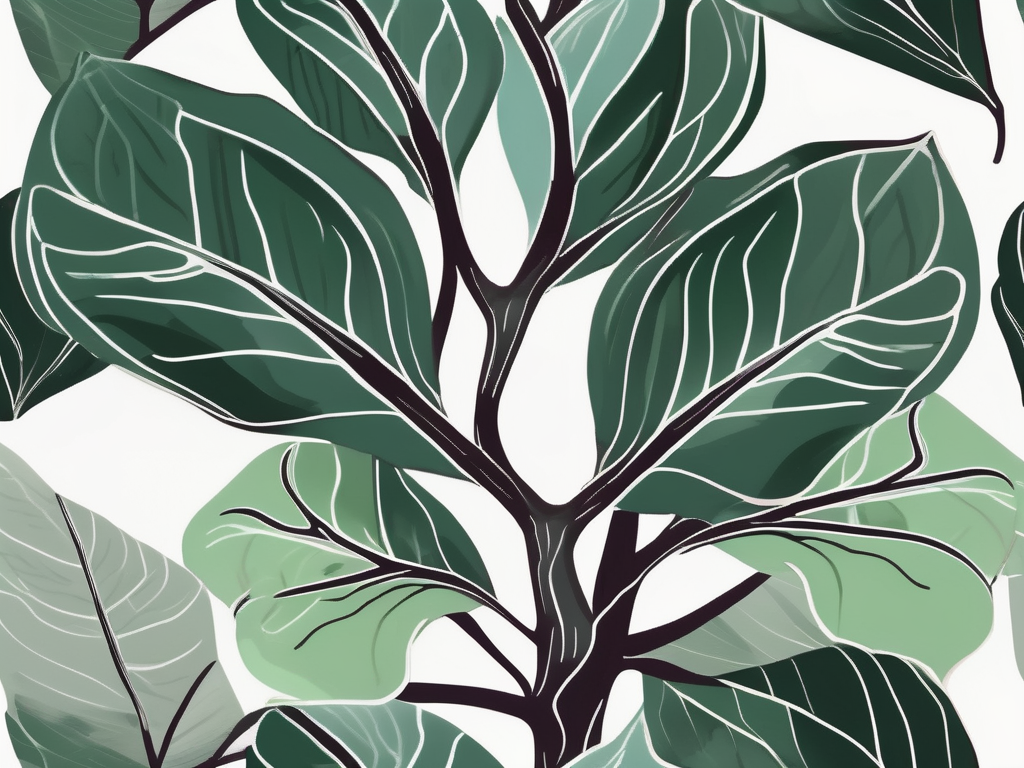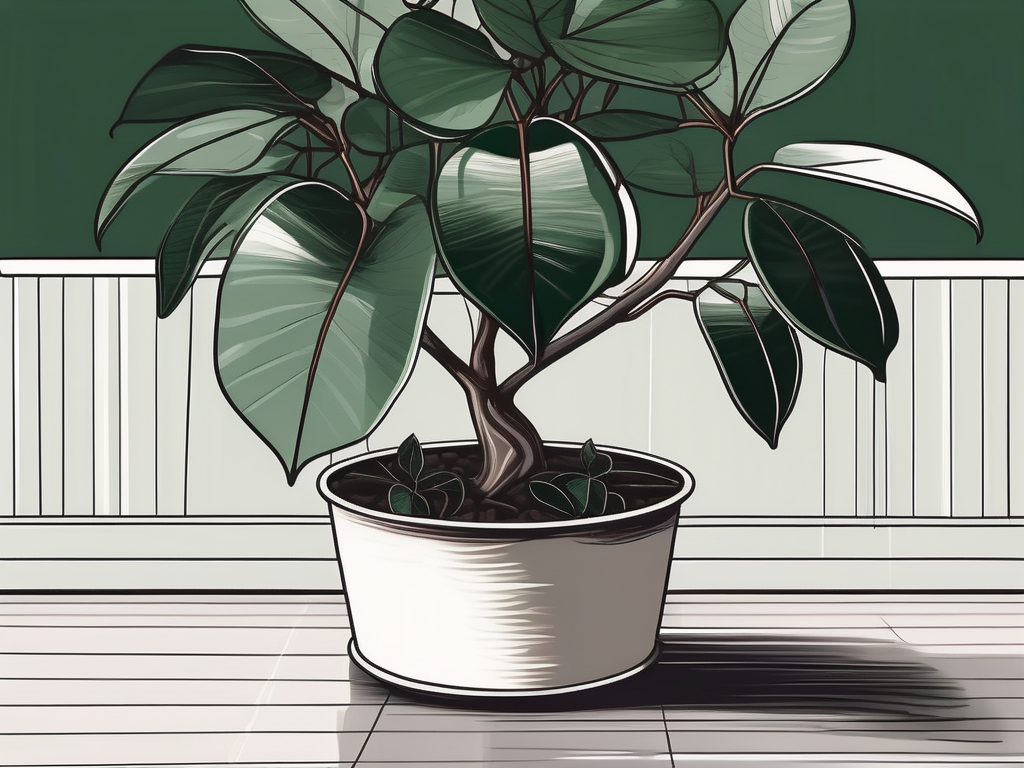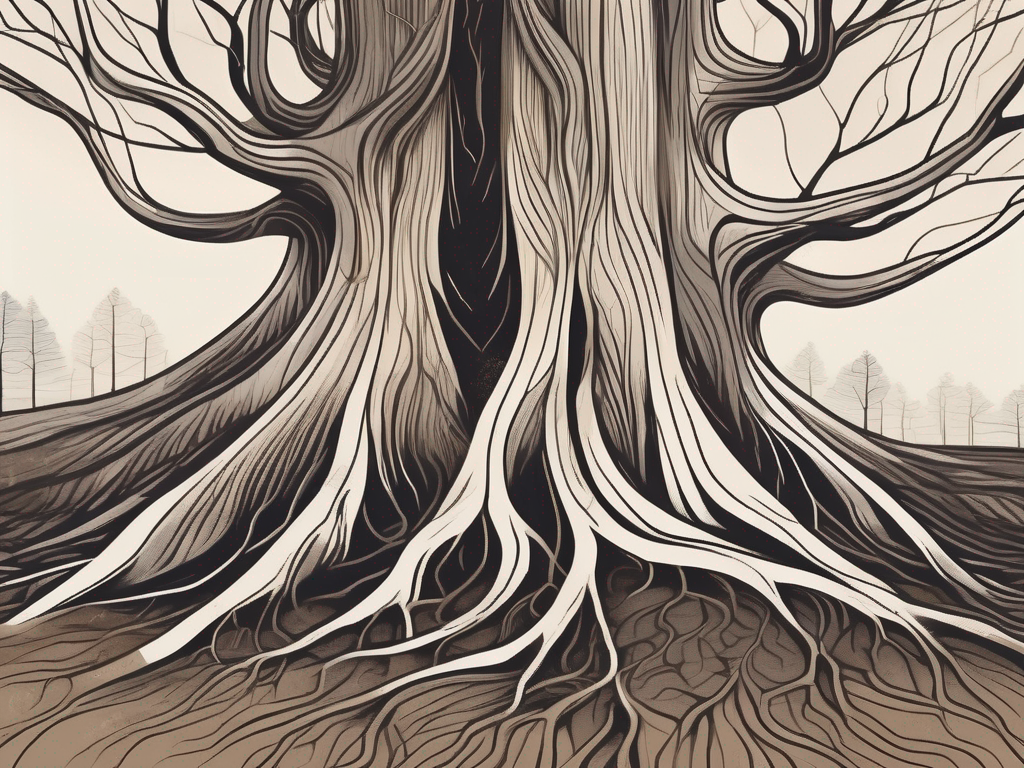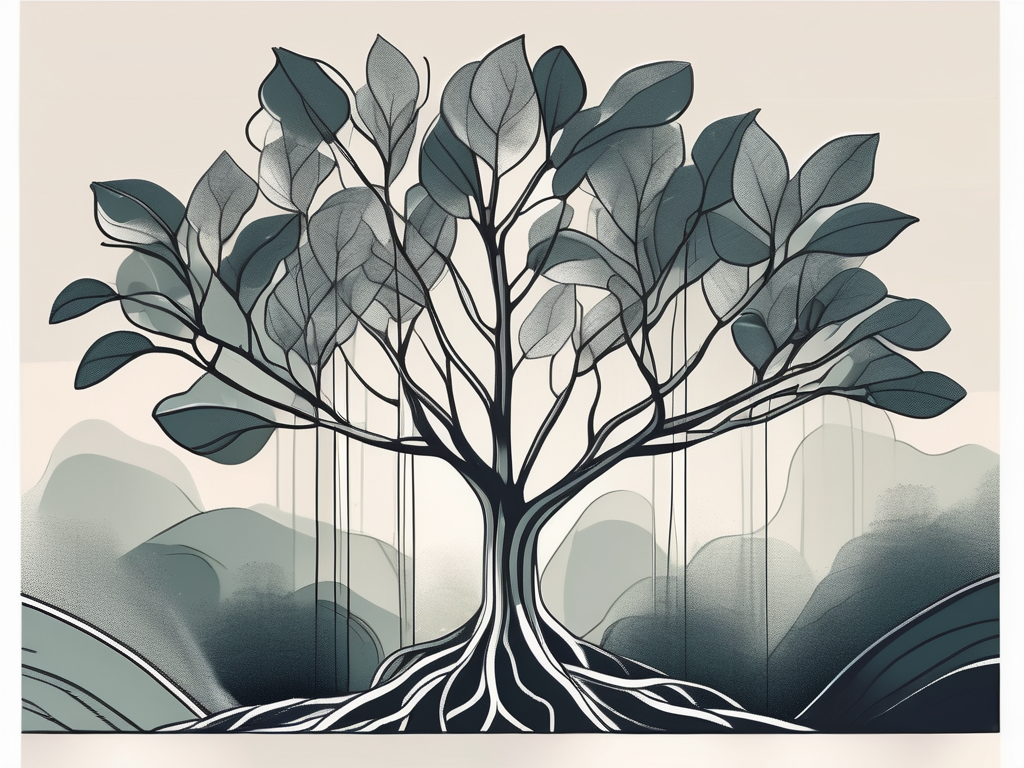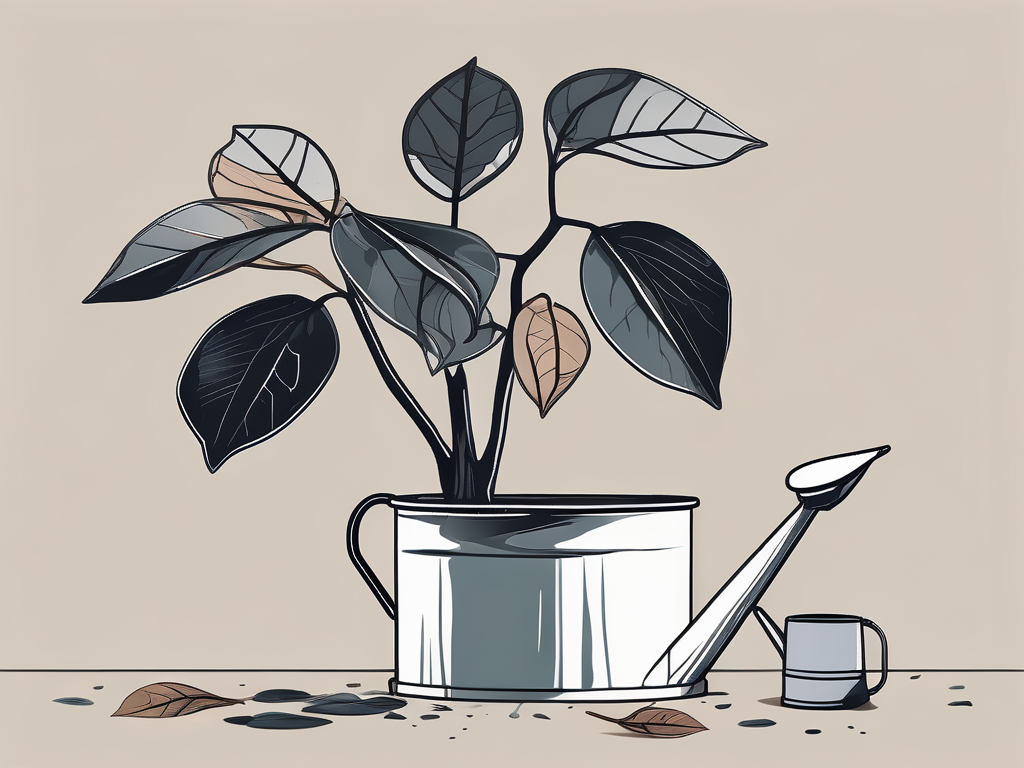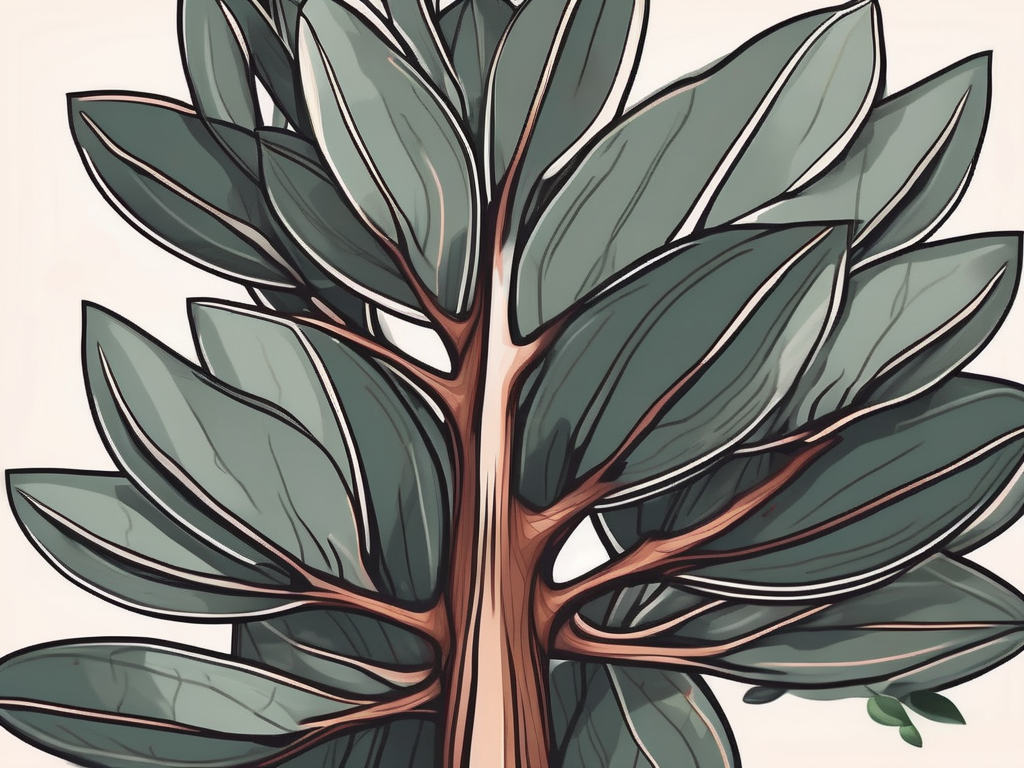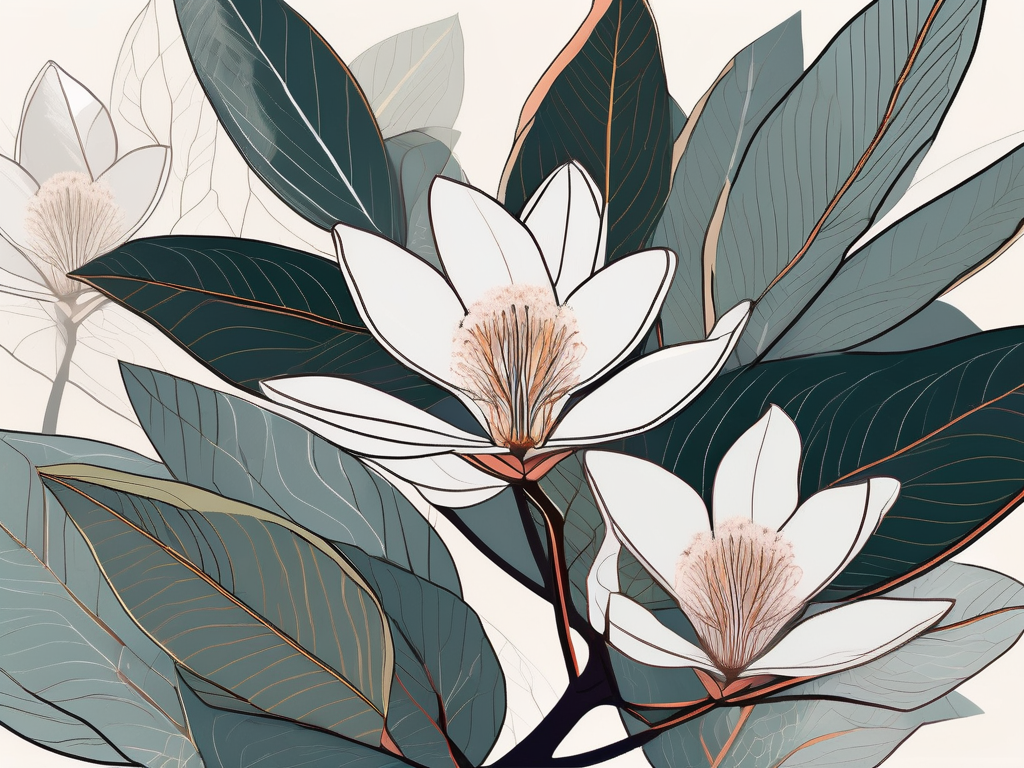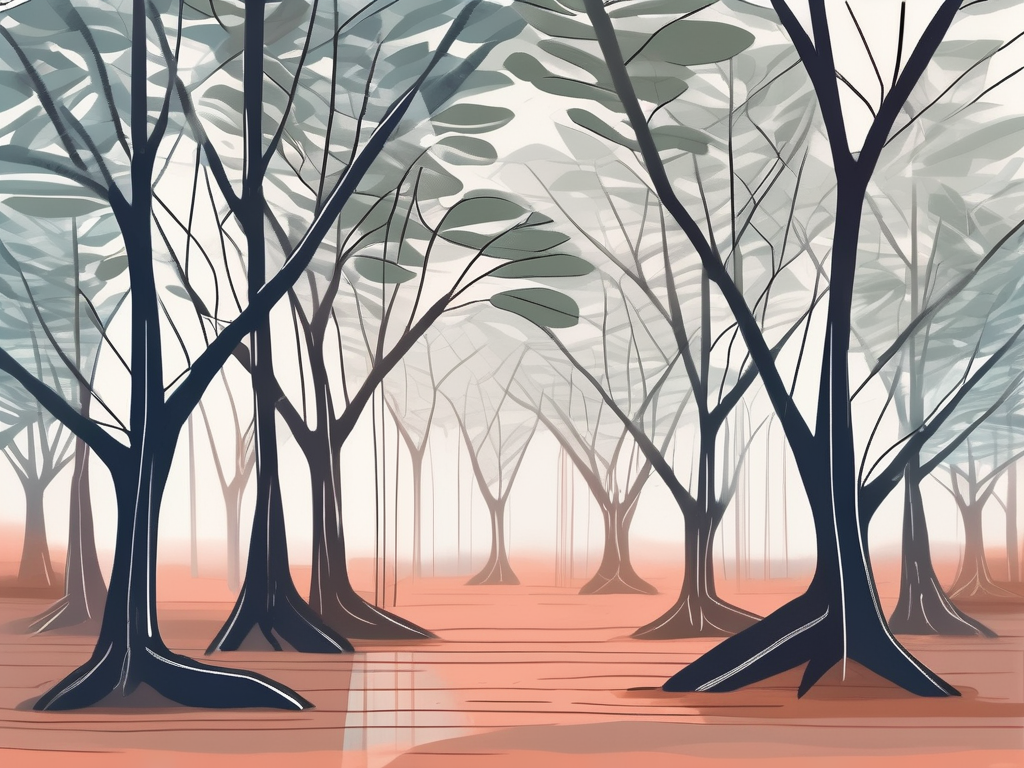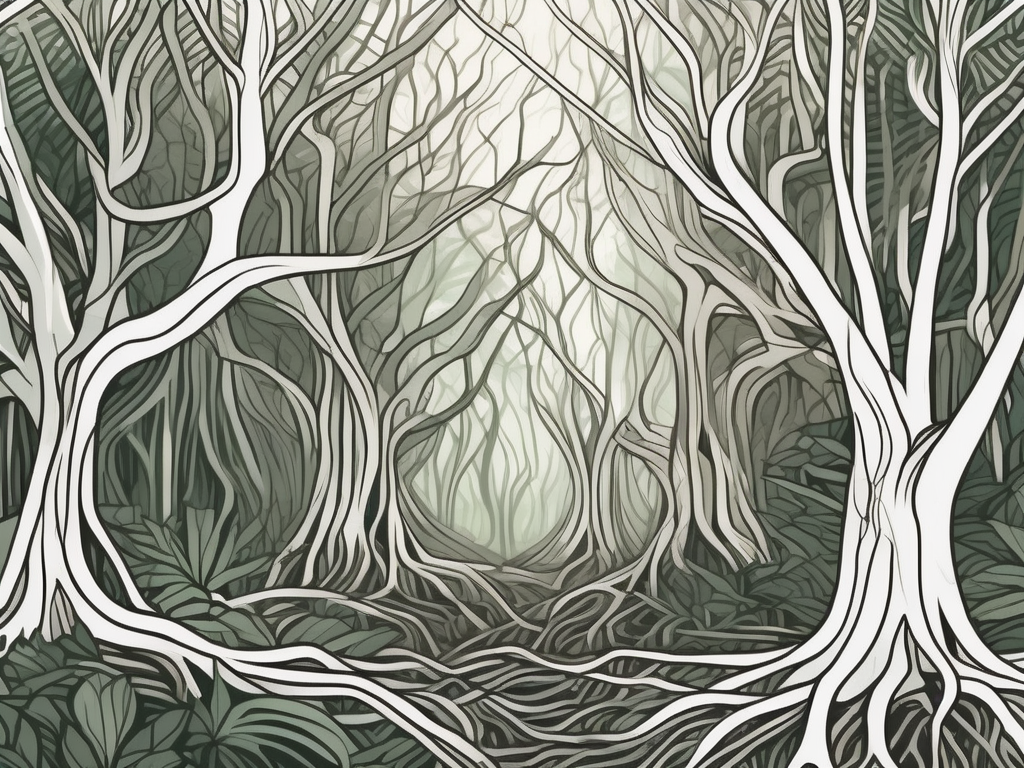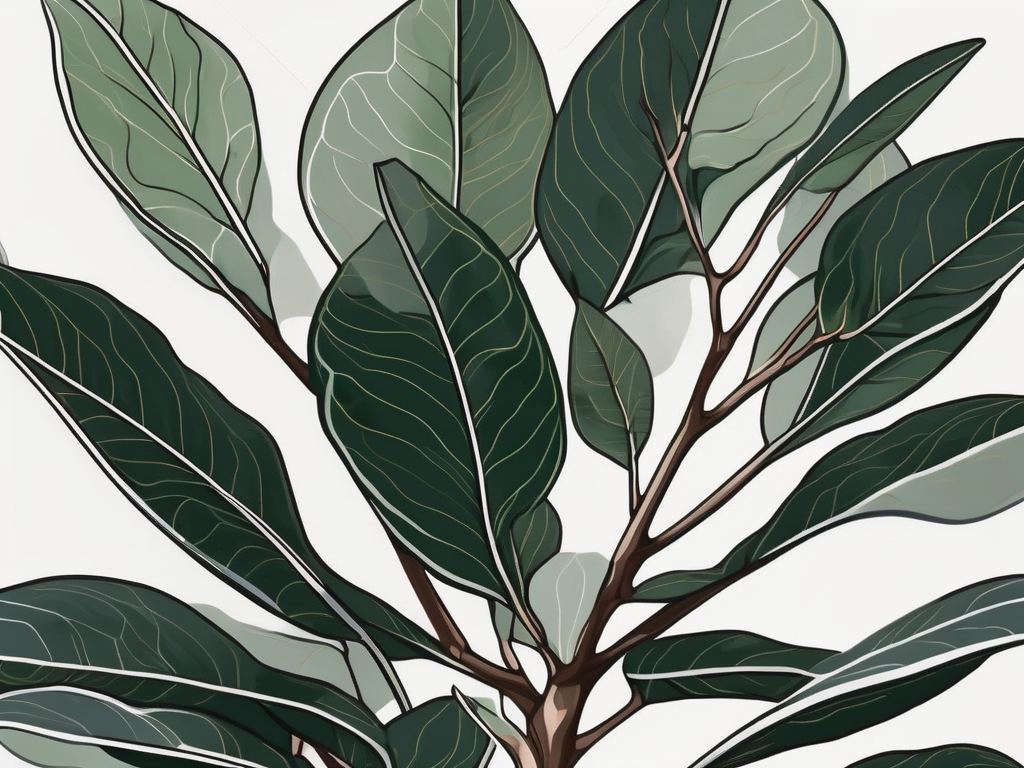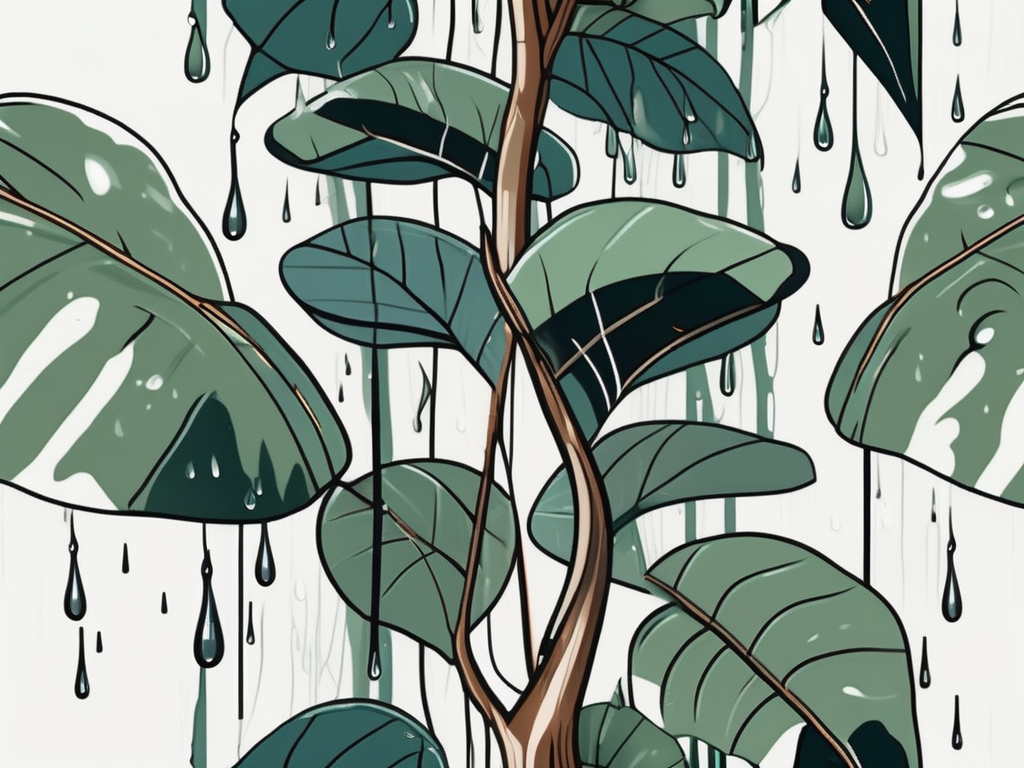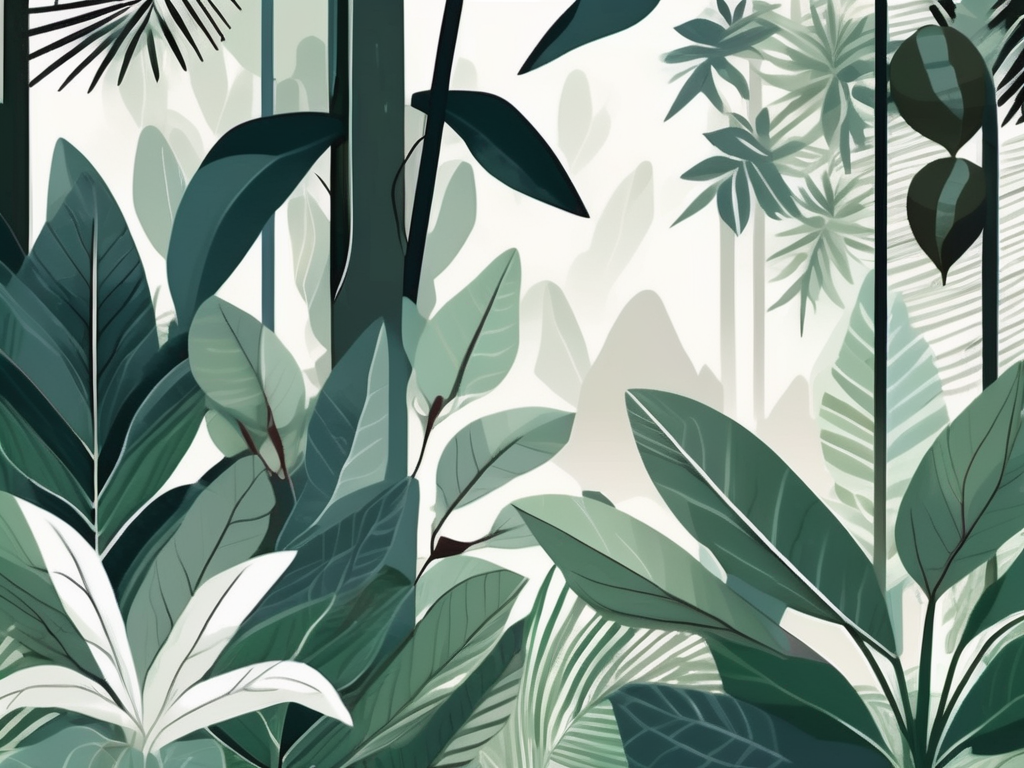
The rubber tree, that bold and beautiful houseplant you might have seen gracing living rooms with its glossy leaves, has an intriguing history that traces back to its natural habitat. Native to the rainforests of Southeast Asia, the rubber tree, scientifically known as Ficus elastica, thrives in a vibrant and unique ecosystem. But what makes this plant so special, and how does understanding its origins help us care for it better at home?
This article aims to take you on a journey through the rubber tree's natural habitat, exploring the conditions it naturally thrives in and translating that knowledge into practical tips for home care. From its native environment to its role in interior design, we'll cover a range of topics to help you become a more confident rubber tree parent.
Getting to Know the Rubber Tree's Native Environment
The rubber tree originates from the dense, humid jungles of Southeast Asia, with countries like India, Nepal, Indonesia, Bhutan, Burma, and Malaysia being its primary homes. These forests are characterized by high humidity, warm temperatures, and an abundance of rainfall, which contribute to the lush growth and towering height of rubber trees in their natural habitat. In the wild, these trees can grow up to 100 feet tall, a far cry from the smaller versions we keep in our homes.
Understanding that the rubber tree thrives in such a humid and warm environment gives us clues on how best to care for it indoors. For instance, maintaining a warm room temperature and ensuring the plant gets enough humidity can mimic its natural surroundings. Some plant lovers even place a small humidifier nearby or regularly mist the leaves to keep them looking their best.
Interestingly, the rubber tree is part of a larger ecosystem where it often supports other plant and animal life. Its large leaves provide shade and its roots help hold soil in place, preventing erosion. These factors highlight the importance of mimicking some of these conditions, like soil stability and leaf care, to ensure your rubber tree is as happy indoors as it is in the wild.
The Rubber Tree's Adaptations
The rubber tree has developed several fascinating adaptations that help it survive and thrive in its native habitat. One of its most notable features is its aerial roots. These roots are not just for show; they help the tree in anchoring itself in the unstable forest ground and absorb moisture and nutrients from the air. This adaptation is particularly useful in the rainforest, where the soil can be challenging.
In a home setting, this means ensuring your rubber tree is planted in well-draining soil to prevent root rot, which can occur if the roots sit in water for too long. A soil mix that includes components like perlite or orchid bark can help achieve this. Additionally, replicating the moisture-rich environment through regular watering, without overdoing it, is key.
Another adaptation is the rubber tree's ability to shed its lower leaves as it grows taller. This is a natural process that allows the plant to focus its energy on new growth, a good reminder for us to occasionally prune the tree to keep it healthy and encourage new leaves. Pruning can also prevent the plant from becoming too top-heavy, which can be an issue indoors.
Light Requirements and Placement
Rubber trees in their natural habitat enjoy bright, indirect sunlight. They are often shaded by the canopy of taller trees, which means they rarely experience direct sunlight. This translates well to indoor care, where placing the plant near a window with filtered light or in a spot that gets bright but indirect sunlight will keep it thriving.
However, rubber trees can also adapt to lower light conditions, making them versatile houseplants. But keep in mind, less light can slow their growth and cause the leaves to be less vibrant. On the other hand, too much direct sunlight can scorch the leaves, leading to brown spots or edges. If you notice this happening, try moving your plant to a shadier spot or use sheer curtains to diffuse the light.
Consider the orientation of your windows when placing your rubber tree. East-facing windows are usually perfect, offering bright morning light without the harsh afternoon sun. South or west-facing windows might require some adjustment with curtains or positioning further from the window.
Watering: Mimicking the Monsoon
In the wild, rubber trees are used to the heavy rains of the monsoon season, which means they appreciate a good soak. However, the key is to allow the soil to dry out a bit between waterings, mimicking the natural cycle of rain and dry periods. Overwatering is one of the most common mistakes, leading to root rot and other issues.
A good rule of thumb is to water your rubber tree thoroughly and then let the top inch or two of soil dry out before watering again. This might mean watering once a week during the growing season in spring and summer, and less frequently in the fall and winter when the plant's growth slows.
Pay attention to your plant's signals. Drooping leaves might indicate it's thirsty, while yellowing leaves can be a sign of overwatering. Adjust your watering schedule accordingly, and remember that factors like humidity, temperature, and light will all influence how much water your rubber tree needs.
Temperature and Humidity Needs
As tropical plants, rubber trees thrive in warm temperatures and high humidity. They prefer temperatures between 60-85°F (15-29°C), which is conveniently similar to the average indoor climate. However, they don't appreciate sudden temperature changes or drafts, so it's best to keep them away from doors or windows that are frequently opened during colder months.
Humidity is another factor to consider. While they can adapt to average indoor humidity levels, rubber trees will benefit from a little extra moisture in the air. You can increase humidity around your plant by grouping it with other plants, using a pebble tray filled with water, or running a humidifier nearby. These methods can help prevent issues like browning leaf edges, which can occur in dry conditions.
Keep an eye on your rubber tree's leaves for signs of stress. Curling or brown edges might suggest the air is too dry, while wilting could mean it's too hot. Adjusting your indoor environment to better suit your plant can make a huge difference in its health and appearance.
Soil and Potting Preferences
The rubber tree's roots enjoy a loose, well-draining soil that's rich in organic matter. In the wild, they grow in the nutrient-rich forest floor, which is why a good potting mix can be beneficial. You can create an ideal mix by combining standard potting soil with perlite, pine bark, or sand to improve drainage and aeration.
The choice of pot is equally important. Ensure your pot has drainage holes to allow excess water to escape, preventing waterlogged soil. A heavy, sturdy pot can also help support the plant as it grows taller, reducing the risk of tipping over.
Repotting your rubber tree every couple of years, or when you notice roots growing out of the drainage holes, can help it continue to grow healthily. Choose a pot that's one size larger, and refresh the soil to provide new nutrients for your plant.
Feeding and Fertilization
Just like any living organism, rubber trees need nutrients to thrive. In their natural habitat, they get a steady stream of nutrients from decomposing plant matter in the soil. At home, a balanced fertilizer can replicate this.
During the growing season, typically spring and summer, feed your rubber tree with a balanced liquid fertilizer every four to six weeks. Be careful not to over-fertilize, as this can cause more harm than good. If the plant is not growing or is in dormancy during the fall and winter months, you can skip the fertilizer entirely.
Always follow the instructions on the fertilizer package to avoid nutrient burn, which can damage the roots and leaves. If you're unsure about how much to use, it's better to err on the side of too little rather than too much.
Common Pests and Problems
Like many houseplants, rubber trees can be susceptible to pests like spider mites, mealybugs, and scale. These pests can cause damage to the leaves and stems, but with vigilance and prompt action, they can be managed effectively.
Regularly inspect your plant for signs of pests, such as webbing, sticky residue, or small insects on the leaves. If you notice any, isolate the plant to prevent the pests from spreading to other plants. You can remove minor infestations by wiping the leaves with a damp cloth or using a gentle insecticidal soap.
Other common issues include leaf drop, which might be caused by overwatering or a sudden change in environment, and leaf discoloration, often linked to incorrect lighting or watering. Address these problems by adjusting your care routine and ensuring your rubber tree's environment closely matches its natural habitat.
Incorporating Rubber Trees into Your Home Design
Beyond their care requirements, rubber trees have a lot to offer in terms of aesthetics and design. Their striking leaves and elegant form make them a popular choice for both modern and traditional interiors. Whether you're looking to add a focal point to a room or fill a corner with greenery, a rubber tree can be a perfect fit.
Consider the height and size of your plant when placing it in your home. Taller rubber trees make excellent statement pieces in living rooms, while smaller ones can add interest to a bedroom or office. Pair them with complementary pots or plant stands to enhance their visual appeal.
Additionally, rubber trees can help purify the air by absorbing toxins and releasing oxygen, contributing to a healthier indoor environment. Their presence can create a sense of calm and connection to nature, making them a valuable addition to any space.
Final Thoughts
By understanding the rubber tree's natural habitat and unique characteristics, you can provide the care and conditions it needs to flourish in your home. From light and water to soil and pest management, each aspect of care is an opportunity to replicate the plant's natural environment and ensure its health and beauty.
At Cafe Planta, we believe in the power of plants to transform spaces and bring joy to people's lives. Whether you're looking for a new addition to your collection or need advice on plant care, we're here to help. Feel free to reach out to us via email or connect with us on Instagram. Let's grow together and create beautiful, thriving plant-filled homes.














